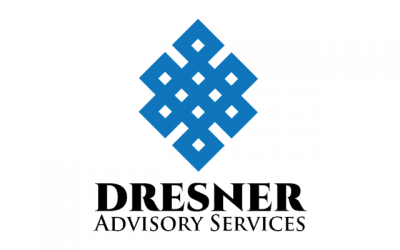Unlocking Productivity Through Real-Time Data
It’s well known that the speed and productivity of an organization’s employees has a direct impact on its profitability. But, when those employees are faced with the challenges of working with legacy technology, outdated reporting processes, and various other manual tasks, their speed and productivity can suffer.

Embracing the insights and intelligence offered by live democratized data can reinvigorate the entire workforce, streamlining the ways in which they work, and delivering greater returns for the overall business.
Data-driven decisions on the go
A recent McKinsey report identified the importance of data-driven decisions to a business’s performance and profitability. But such decisions can be hard to make if legacy systems and processes mean executives aren’t able to access data — and the insights it offers — in real time.
This was the challenge faced by grilling company Traeger Grills. Massive amounts of data were scattered over dozens of data sources, including an ERP system created in 1992. As a result, the company’s CEO was unable to see what was happening at any given moment in his business, often having to wait more than a week for reports.
Domo now brings live data from dozens of systems, including Salesforce, Google Analytics, NOAA, and Shopping Cart, into one central location, where it’s all updated in real time. Everyone in the company, including the CEO, now has immediate access to an accurate view into the business whenever they need it. Real-time reports and insights mean they’re able to make decisions and take appropriate action — instantly — directly from their phones.
Real-time reporting
Manual reporting processes also proved challenging for alcoholic spirits producer and wholesaler Edrington Beam-Suntory which, prior to Domo, struggled to migrate its sales data into anything credible or trustworthy. Data across the company was held in silos, brought to life in separate and incompatible sources such as Excel documents and third-party systems including Salesforce and internal CRM tools. With reports often taking up to three days to complete, sales performance suffered. Accounts were being lost but, as teams were working from outdated reports, they were usually too late to rectify any issues. Old data also meant the duplication of sales calls — with up to 200 more calls being made per year than was necessary.
By consolidating its data, Domo enabled the business to build a dashboard from which staff could monitor on-track and lagging KPIs and, by splitting the information into outlet sales, brand, and market share data, sales teams can now see which brands were performing best. Viewing that data in real-time meant Edrington Beam-Suntory could understand where there was formerly misalignment in its sales figures, and now enables the company to not only maintain, but also grow business with existing outlets, tailoring its offering where needed — impossible under its former systems.
Making meetings more productive
Outdated reporting processes can lead to unproductive meetings, too. According to a 2019 report, the cost to businesses of poorly organized meetings was estimated at $399 billion in the U.S. and $58 billion in the U.K. It’s little wonder, then, that Elon Musk published strict rules for running more productive meetings at Tesla: 1. No large meetings, 2. If you’re not adding value to a meeting, leave, and 3. No frequent meetings.
While these rules may be a little extreme for many businesses, it’s possible to use data visualization platforms to create a culture of shorter and more productive meetings, as demonstrated by online wine merchants, Vinomofo.
The company’s data was previously locked in its custom-built website, requiring executives to ask the web team whenever they wanted to access it. A reticence to do so meant they were often unable to analyze that data to make informed business decisions. Domo liberated Vinomofo’s data from its website, making it easily accessible from one platform, and delivering it in near real-time to the company’s marketing and C-suite executives.
This easy access means meetings are now much shorter and more productive. Decisions in those meetings are based on data, rather than anecdotes and assumptions, and next steps and priorities can be clearly identified from the insights the data provides.
Breaking down barriers
Legacy technology and outdated, manual processes can act as barriers to a company’s productivity and, in turn, its profitability. Access to democratized, live data analytics, however, can prove invaluable in overcoming these barriers — improving the speed and accuracy of business decisions, the transparency and effectiveness of sales efforts, and the efficiency and value of internal meetings.
Edrington Beam-Suntory, for example, saw a 33 percent increase in distribution in the six months since streamlining the consolidation, monitoring, and sharing of its data, and a 72 percent increase in productivity across the company.
To find out more about how Domo can unlock your business’s productivity, please click here.
Check out some related resources:

AI Chat Implementation Checklist

Domo Ranked #1 Vendor in Dresner Cloud Computing and BI Report









